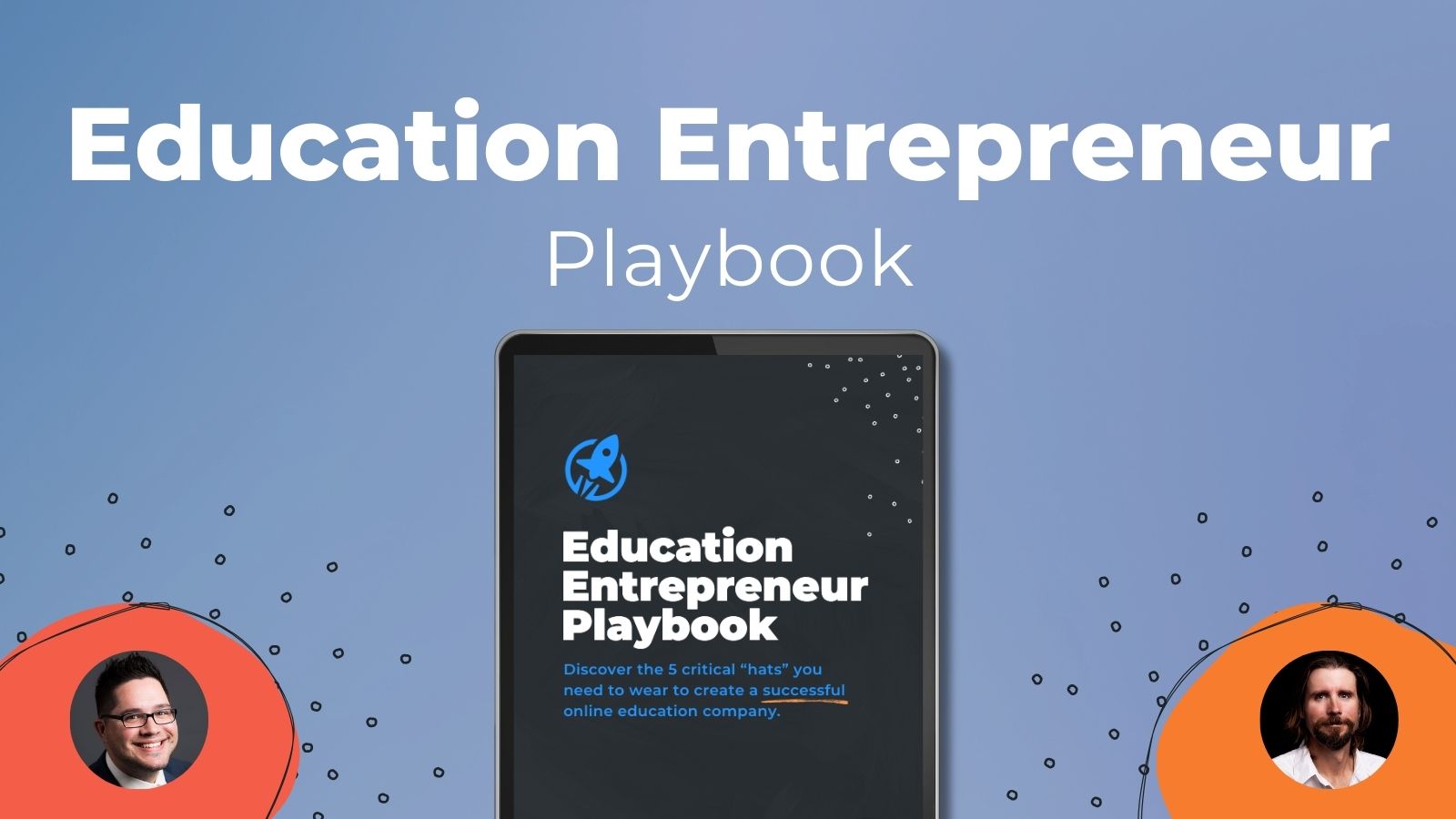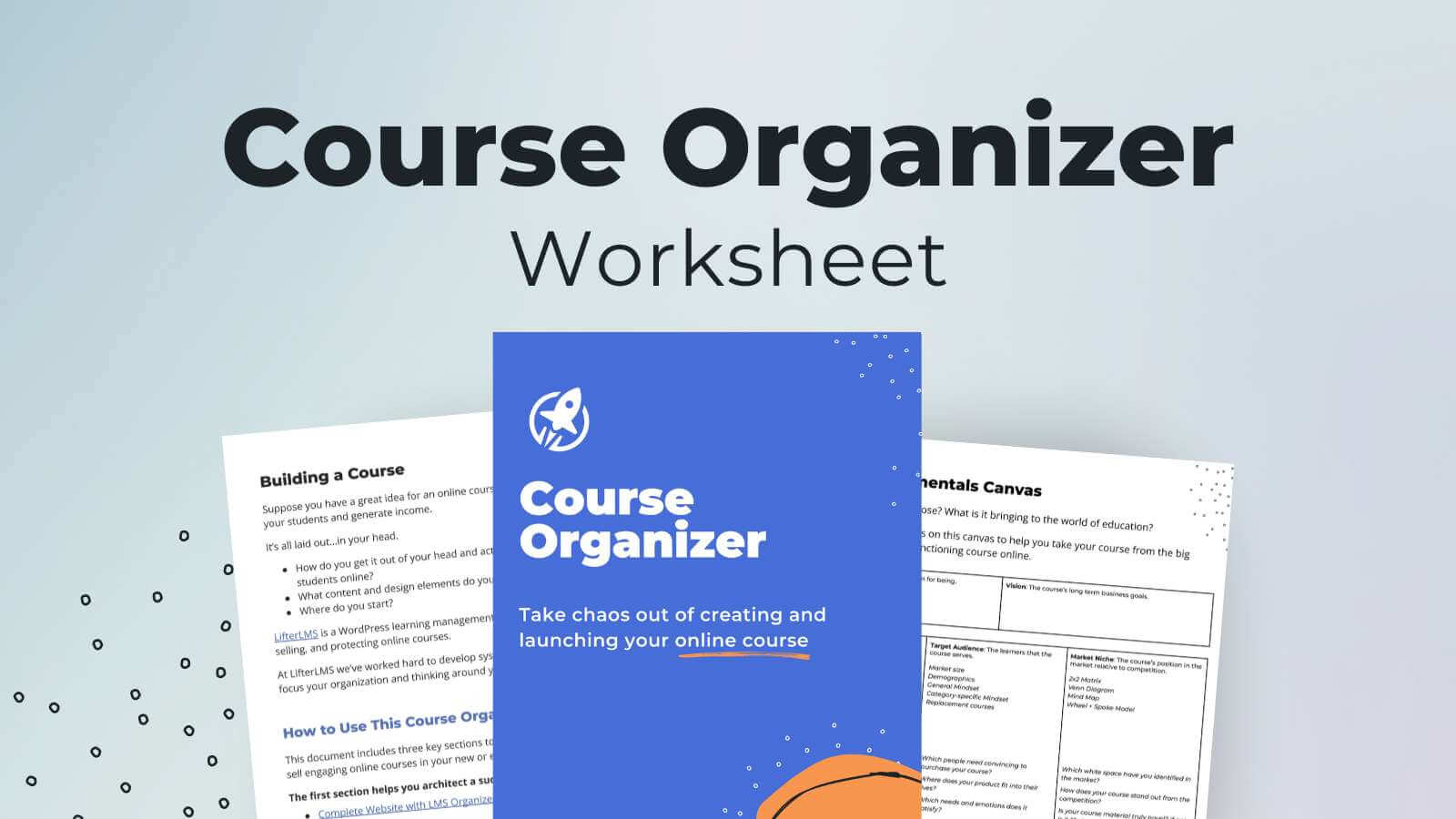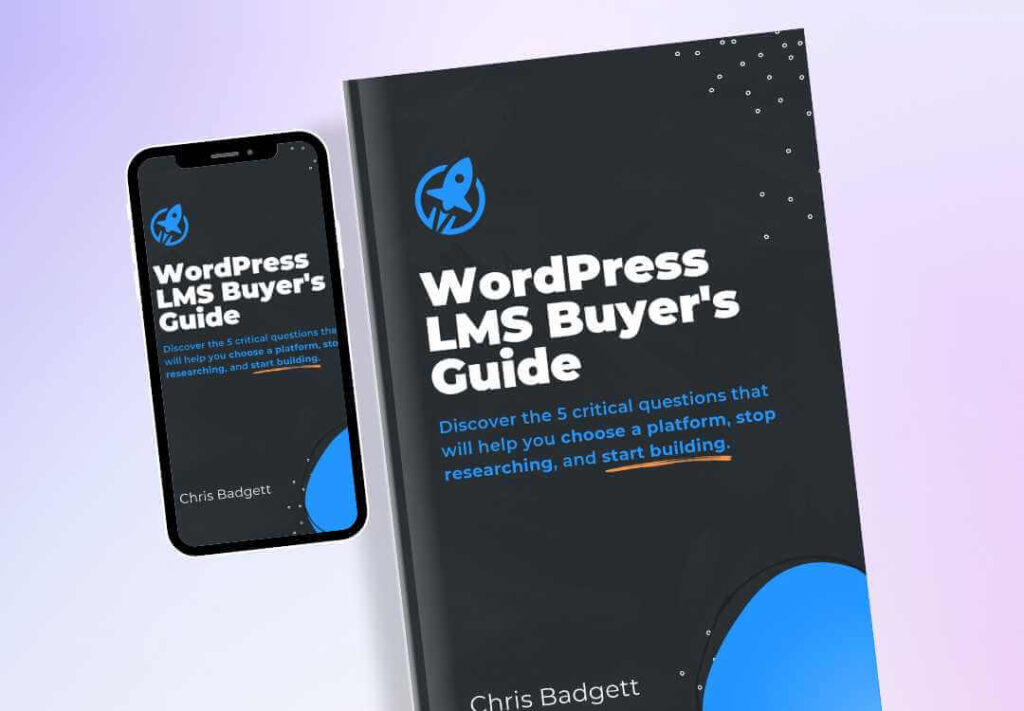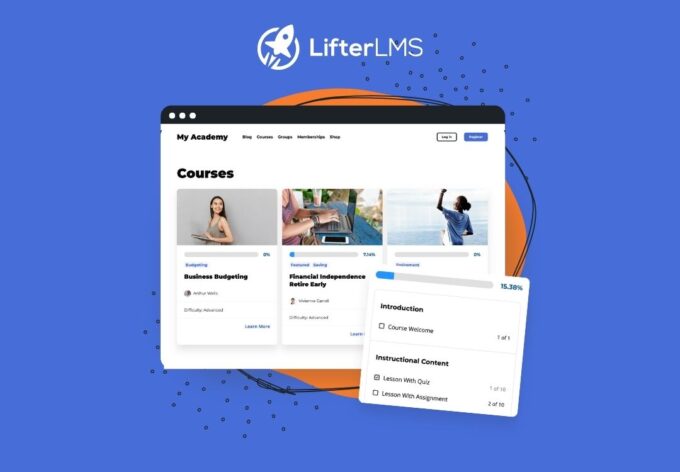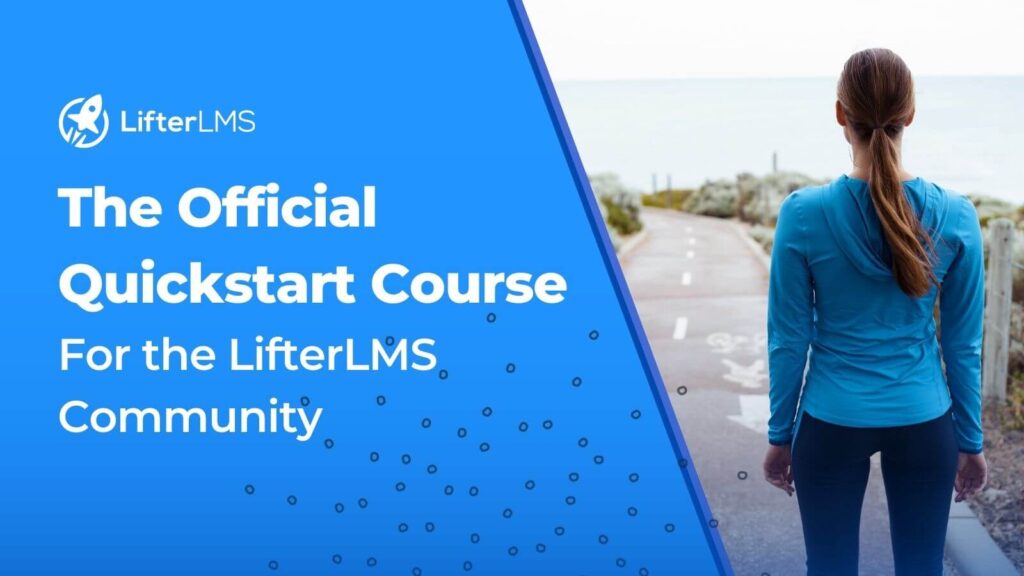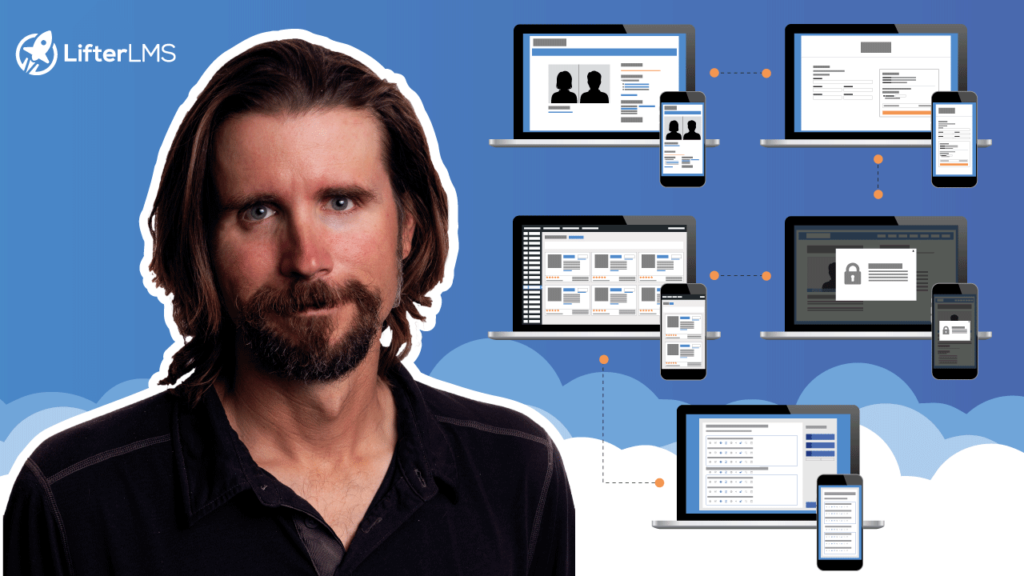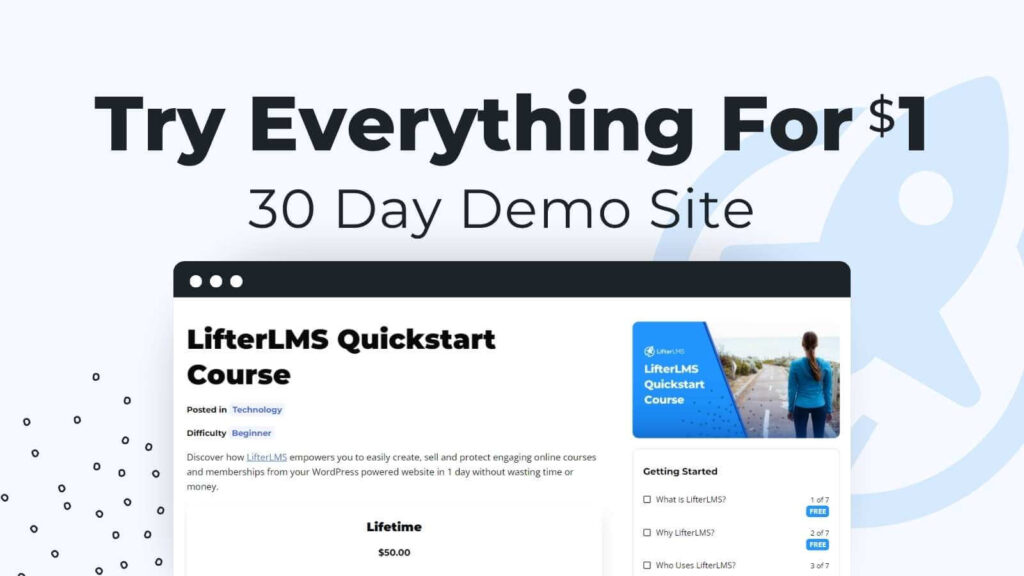In eLearning your number one goal is to help your audience fully understand the information they need to learn. Using a variety of media formats — including text, video, and audio — you can accommodate most individual learning styles. Plus you are offering greater worth, and therefore can charge a higher fee for your online courses. In today’s LMScast Joshua Millage and Christopher Badgett explain how to embed audio in your WordPress LMS. It’s actually easier than you might think.
There are several options for including audio in your course design. The simplest method is to use the existing media hosting capabilities that are built into WordPress. Just upload an mp3 with the “Add Media” button and you are done. In the past you had to install audio plugins for WordPress, and that is still an option if you need greater functionality. The Add Media function does have limitations depending on the scope of your presentation and size of your audience, but it is the most immediately available method.
If you have higher traffic you will need premium audio hosting to allow for greater capacity and capability. With premium hosting you also get content protection and marketing capabilities. There are many resources available to you depending on your requirements and some are not suitable for eLearning, so make sure you are paying only for what you actually need.
Libsyn is an established media hosting service that functions best as a podcasting host, but for eLearning you will be paying for services you don’t need and may have to work around. A newer provider that might be more appropriate is SoundCloud. Using this service requires some technical expertise, but it offers you more design capability. It even includes a comments capability that allows you to receive direct feedback from your students right on the waveform. It is currently geared more toward artists and musicians, but the platform is extremely flexible, which makes it perfect for online course design. It is also mobile enabled, which allows students to access your audio content wherever they are.
Mobile audio is a vital consideration for your course offerings as it allows students to take at least part of your content with them and listen while they do other things. As with SoundCloud, mobile capability should be available with your premium service. You can also just make mobile audio files of individual lessons available for download from a WordPress media library or from Dropbox. This allows access to course content when the listener is not connected to the internet.
Another advantage of audio content is that students have the option of listening in double or triple time; i.e. increasing playback speed so they can access the information in much less time, and thus stay engaged more easily.
Providing audio content is simple and direct, and knowing how to embed audio in your WordPress LMS allows you to employ that media option. It does not require expensive equipment or studio time. You can create audio files on a smartphone or computer using basic technology you already have in hand. The most important thing is to get started, and a WordPress learning management system plugin like our lifterLMS makes it easy to do just that.
As you design your online courses, remember that each student is an individual who learns in a unique way. Presenting your information with a variety of media helps you to reach each student and keep them engaged.
Remember that you can post comments and also subscribe to our newsletter at LMScast.com for updates, developments, and future episodes of LMScast. Thank you for joining us.
And if you’re an already successful expert, teacher or entrepreneur looking to grow, check out the LifterLMS team’s signature service called Boost. It’s a complete done for you set up service where your learning platform goes live in just 5 days.
Episode Transcript
Joshua Millage: Hello, everyone. We’re back with another episode of LMScast. I’m Joshua Millage and I’m joined today with Christopher Badgett. Today we’re talking about how to embed audio in your WordPress LMS. This is something that I’ve been doing for a long time with our sister podcast, Infusioncast.
Chris, why is it important to use so many different forms of media? Let’s start there before we get into the tactic today.
Chris Badgett: There’s two primary reasons for that, and we’ve done a separate podcast episode about each of these. But real quickly they are number one: our main goal is always to focus on the learner learning. When they’re getting multimedia forms of content, whether that be text, video and audio, you’re adapting to different learning styles, so people really connect with the different formats. That’s a big reason.
The other reason is when you create that multimedia learning content you can also charge more money for it. It’s more valuable. There’s more perceived value in the marketplace. Those are the two main reasons.
Joshua Millage: That’s amazing. Let me take it into the tactic today, because I have been podcasting and using audio for a really long time, and there’s a lot of different options. I think for people to go and depending on what they’re trying to do and how much protection or how much freedom they want to have there’s a lot of different options.
I think first and foremost you can utilize your WordPress media hosting capabilities if you want. There’s some advantages and disadvantages. Advantages is you’re keeping everything in one spot. Do you happen to know off the top of your head any good audio player plugins? I personally don’t.
Chris Badgett: There’s a bunch of free ones that are on the WordPress repository. There’s one called zen-something I’ve used before. The interesting thing that’s happened lately with WordPress is you no longer need that stuff. You can get it if you want it because that audio plugin has a better design or whatever, but by default now when you click the Add Media button on WordPress, whether that’s a lesson or any post or page for that matter, if you upload an mp3 it will put in a nice responsive play button, the bar …
Joshua Millage: Oh really, so they have it built in.
Chris Badgett: It’s built in now.
Joshua Millage: Oh wow, that’s amazing.
Chris Badgett: But like you said, there are some constraints that come with if you go that route and you have a high traffic site, and also with WordPress media library itself and the type of hosting you’re on. I think by default you start out with a 64-megabyte upload limit. If your audio gets too big you’re going to run into that limit, which can be raised in some cases on your hosting account but you’re starting to get into where you should really be getting into premium audio hosting.
Joshua Millage: Absolutely, absolutely. I think that’s the next step would be premium audio hosting. There’s a lot of options for that nowadays, too. If you’re coming from a podcast angle, like you want to utilize content in your online course and you want to protect it but you also want to maybe utilize it as a marketing channel, there’s two main players in the podcast media hosting space. There is SoundCloud, which is kind of the new boy on the block, I guess you could say, and then there’s Libsyn.
Libsyn‘s been around for years. They’re pretty bulletproof. I like Libsyn for a lot of reasons. I don’t use Libsyn, but I like Libsyn. I think that if you’re pure podcasting, go Libsyn and then in your courses you actually might want to utilize something else. Because Libsyn’s geared towards giving you an RSS feed for syndication. You could utilize Libsyn, have a subchannel, and make all of that protected and embed that using their players, but you’re just going to be spending more money. So in this use case, I would say Libsyn’s probably not the best. If you’re pure podcasting, Libysn’s awesome.
Now if you want a hybrid of both, and actually the one that I utilize is SoundCloud, because SoundCloud allows for … and they’re not as advanced in the podcasting space as Libsyn so you need to be a little techy if you want to use it for podcasting, like you have to do some kind of hacky things to get it out there. But if you’re just utilizing it for an LMS purpose, it’s amazing. You would upload the audio. They have these beautiful HTML 5 audio players. They look gorgeous. One of the coolest features I think is that you can actually drop comments in along the wave form. You have this wave form that goes up and down, and as you’re talking, as you’re giving your lecture, if your lecture is at minute seven then someone could actually jump in and comment on minute seven. “Hey professor” or “Hey Chris, what did you actually mean by x, y and z?” That adds a social aspect that is pretty awesome. Then you could utilize that for podcasting also. You could keep some tracks private, some tracks public. You could have the public tracks go into your RSS feed.
If people are really interested in podcasting, I’m happy to make a video about podcasting as a mechanism for marketing for your LMS. That would be a really fun video and I could walk through the how-to of how that works. I think for the sake of this episode and to keep it concise, I would highly recommend SoundCloud as the number one pick for educational media hosting and embedding. It’s just really flexible. If someone were to access your site on their mobile device, they’d be able to play it no problem there. I know some people might be going “SoundCloud doesn’t have anything … if I go to the site it has nothing to do with LMS,” and they’re right. It’s mainly geared towards musicians and artists right now, not even podcasters. But the platform is so dynamic that I think it works really, really well.
Chris Badgett: Absolutely. One of the other things that we run into is people with their WordPress learning management system, they want people to be able to take the courses on their phone when they’re offline. You can’t really do that without going into a native iPhone, Android app-type situation. What you can do is also offer an audio download on an individual lesson so there’s a download link so the person can download that audio file for that lesson and go for a run and listen to it, that sort of thing. They don’t have to be connected to the internet.
For that, I don’t know about SoundCloud, but in the past if it’s small enough I would put that audio file on my WordPress media library and create a download link. If it was bigger I would put it in the Dropbox in a public folder and have a download link so they could pull it down from Dropbox.
Joshua Millage: Yeah, that’s another great way to do things for sure. Chris, I think this is a really helpful episode. I think a lot of people are going to enjoy figuring out how to embed audio. I think it’s a little different than video. I think there’s some advantages and some disadvantages, but our recommendation is when you’re creating an online course to use all the different forms of media, because you don’t know exactly how your student is going to learn.
That is huge, huge, huge, and I think it’s really important to be considerate of how everyone learns. I’m an audio guy so I’m a little biased in this episode. I like audio and I like audio for the simple reason, and this is something that a lot of people don’t think about, I listen to things in double or triple time. I have conditioned myself to not be thrown off by the fact that when I do that people sound like chipmunks. Because that doesn’t matter I can get through so much more information. It’s like being in the Matrix scene where they put the jack in the back of the head. I feel like that’s what I’m doing when I listen to things in double or triple speed.
That’s something that people don’t consider. I would highly recommend putting audio out there for weirdos like me who listen to it in double time. I can get through your course faster. It keeps me engaged, and it just helps with my ADD. At the end of the day that’s why I’m doing it. Cool. Do you have any final thoughts for the audience here, Chris?
Chris Badgett: Sure. I would say if you’re just creating your first audio lesson or a full audio course, it’s important just not to get too wrapped in all of the fancy mics and equipment and stuff you can get. You can literally record your first audio lesson on your smartphone, on your iPhone, on your Android. All computers have some kind of audio recorder built into it like GarageBand on a Mac. I’m not sure what the Windows equivalent is, but it’s just one of those things where you just got to do it and then over time you’ll continue to make better and better quality audio. If you happen to be watching this video version of this podcast you’ll see Joshua in his sound room with his more advanced audio equipment, but just start. That’s the most important thing.
Joshua Millage: Yeah, absolutely. Awesome. All right, folks. We would love to hear your feedback on this. You can reach us over at LMScast.com and just click this episode, leave us a comment. We’d love to hear from you. Until next time, we’ll talk to you then.


